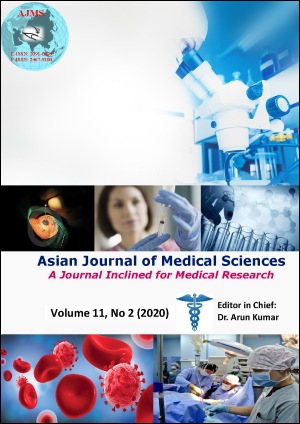Comparative study of expandable cage with integrated plate versus non expandable cage in cervical spine corpectomies
Keywords:
Expandable cage, Cervical spine, Corpectomy, Fusion rateAbstract
Background: The use of expandable cages in cervical spine has gained popularity over the last decade. They have been used in dorsal spine since long but were rarely used in cervical spine due to their high cost. Now, with more insight into their mechanics, many advantages have been noted over the fixed cages along with similar efficacy and with no added complications.
Aims and Objectives: To study the benefits of expandable cage with incorporated anterior cervical plate over non expandable cage in cervical spine corpectomies.
Materials and Methods: Ten cases of two level corpectomy were operated in each group and compared for intraoperative time, postoperative fusion rates and complications.
Results: Intraoperative time was less in the expandable cage group. Fusion rates were comparable at 6 month follow up. No reported long term complication in both groups.
Conclusion: Expandable cages are less frequently used in cervical spine due to their significantly higher cost but there are advantages such as decreased intraoperative manipulation and operative time, less damage to end plates and also useful in cases of poor bone quality.
Downloads
Downloads
Published
How to Cite
Issue
Section
License
Authors who publish with this journal agree to the following terms:
- The journal holds copyright and publishes the work under a Creative Commons CC-BY-NC license that permits use, distribution and reprduction in any medium, provided the original work is properly cited and is not used for commercial purposes. The journal should be recognised as the original publisher of this work.
- Authors are able to enter into separate, additional contractual arrangements for the non-exclusive distribution of the journal's published version of the work (e.g., post it to an institutional repository or publish it in a book), with an acknowledgement of its initial publication in this journal.
- Authors are permitted and encouraged to post their work online (e.g., in institutional repositories or on their website) prior to and during the submission process, as it can lead to productive exchanges, as well as earlier and greater citation of published work (See The Effect of Open Access).




